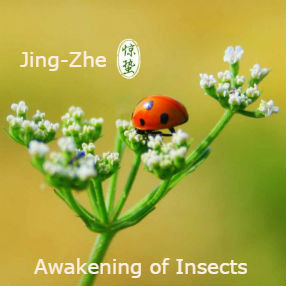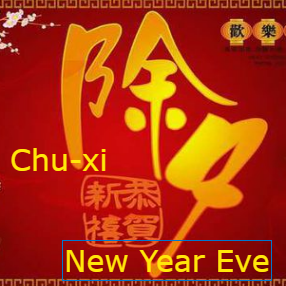
Jing-Zhe 惊蛰: The Awakening of Hibernation
Marking the awakening of insects and warmer days.
Jing-Zhe (惊蛰) is the third solar term (节气) in the traditional Chinese calendar, marking the awakening of hibernating insects. The term comes from the Chinese characters 惊 (Jing), meaning “shock,” and 蛰 (Zhe), meaning “hibernation.” According to folklore, thunderstorms during Jing-Zhe wake hibernating insects, signaling warmer weather.
Chinese Solar Calendar Jing-Zhe
Jing-Zhe is one of the 24 solar terms (节气) in the ancient Chinese agricultural calendar, later adopted by other Asian countries. It begins when the Sun reaches a celestial longitude of 345° and ends at 360°. In the Gregorian calendar, it usually falls between March 5 and March 20.
In ancient China, Jing-Zhe was divided into three periods (候):
- 桃始华 – Peach trees begin to blossom.
- 仓庚鸣 – Yellow warblers start chirping.
- 鹰化为鸠 – Eagles seem to transform into doves as yellow warblers appear instead.
Nature’s Response to Jing-Zhe
Plants and animals follow seasonal patterns, adjusting to climate changes. Each period (候) in a solar term (节气) has an associated “flower letter breeze” (花信风)—a poetic way to describe the seasonal blooms:
- First period: Peach blossoms (桃花)
- Second period: Apricot blossoms (杏花)
- Third period: Roses (蔷薇)
Other flowers, including plum blossoms (梅花), spring jasmine (迎春花), rapeseed flowers (油菜花), and lilacs (丁香花), also bloom during Jing-Zhe.
Role in Agriculture and Tradition
Since ancient times, Jing-Zhe has played a key role in agriculture, marking a time for farmers to begin spring plowing. It remains an important solar term in the Chinese lunar calendar and is still recognized as a traditional festival in some regions.
Conclusion
More than a Solar term,Jing-Zhe (惊蛰)—it reflects the deep connection between nature, seasonal changes, and traditional Chinese culture. Marking the awakening of insects and the arrival of warmer days, it plays a vital role in agriculture and continues to be remembered as a key moment in the lunar calendar. The blooming flowers, singing birds, and shifting weather patterns during this time highlight the beauty of nature’s rhythm, reminding us of the ancient wisdom embedded in the 24 solar terms.

